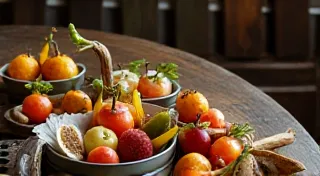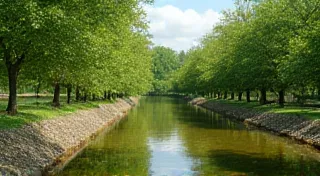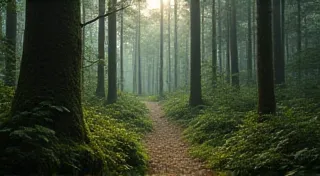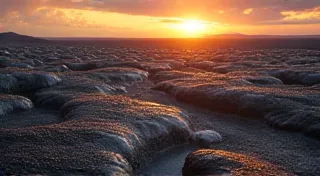The Seed’s Inheritance: Preserving Genetic Diversity in Fruit Varieties
There’s a particular kind of melancholy beauty in an antique accordion. The bellows, once vibrant with the energy of a joyful polka or a mournful waltz, now speak of silence and time. The keys, worn smooth by countless hands, tell silent stories of dancers and musicians long gone. It’s a tangible connection to the past, a feeling of inheriting something precious, something that requires care and attention to keep its spirit alive. The same principle applies, with surprising resonance, to the fruit we grow. For too long, we’ve prioritized uniformity and commercial viability, slowly eroding the incredible diversity that our ancestral orchards once held.
Modern fruit growing, with its emphasis on disease resistance, shipping durability, and shelf life, has led to a dramatic narrowing of genetic variety. Think about it: how often do you encounter a truly unique apple at the grocery store? The vast majority are Red Delicious, Gala, or Fuji – reliable, predictable, but utterly lacking in the character of the forgotten varieties.
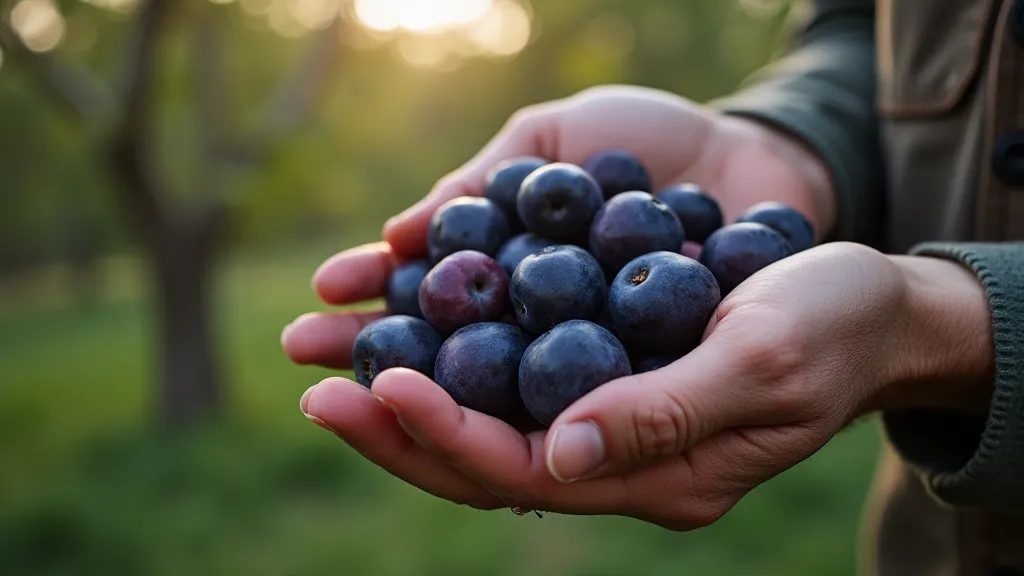
The Lost Flavors of Our Ancestors
My grandfather, a taciturn man of the soil, had a small orchard behind his farmhouse. It wasn’t a meticulously planned space; rather, it was a haphazard collection of trees passed down through generations. I remember, as a child, being overwhelmed by the sheer variety: 'Golden Russet' apples with their honeyed flavor, 'Northern Spy' apples perfect for pies, 'Arkansas Black' plums so dark they seemed to absorb the sunlight. These weren’t names I recognized from the supermarket. They were living connections to the people who had cultivated the land before him, each fruit a testament to their skill and patience.
These heirloom varieties, often passed down through families or local communities, hold a wealth of genetic information – resistance to specific diseases, unique flavor profiles, and adaptations to local climates. The process of selecting and saving seeds over decades, even centuries, resulted in trees uniquely suited to their environment. When we allow these varieties to disappear, we lose not only delicious and distinctive fruit, but also a valuable resource for future generations. Imagine a future where climate change threatens our food supply – these resilient heirloom varieties may hold the key to survival. The artistry involved in nurturing such heritage isn’t merely about botany; it's akin to an artistic vision, much like you might find explored in The Poet’s Graft: Blending Artistic Vision with Orchard Design, where the design of the orchard becomes a canvas for expressing creativity and heritage.
Why Seed Saving Matters: More Than Just a Hobby
The rise of commercial agriculture and patenting of plant varieties has made seed saving increasingly complex. Most modern fruit trees are grafted onto rootstock, meaning the seeds they produce won't grow “true to type.” The rootstock imparts characteristics that influence the tree's size, disease resistance, and even cold hardiness. However, with careful planning and understanding of basic horticultural principles, you can still collect and propagate seeds from open-pollinated fruit trees – those that have been allowed to cross-pollinate naturally. This allows you to reintroduce and develop traits that might otherwise be lost.
Think of the craftsperson meticulously restoring an antique accordion. They aren’t just repairing a broken instrument; they’re preserving a piece of history, keeping a tradition alive. Seed saving, in a similar way, is an act of preservation. It’s a small but powerful way to connect with the past, to safeguard genetic diversity, and to ensure that future generations have access to a wider range of delicious and resilient fruit varieties. The process demands a certain level of diligence and an appreciation for the subtle nuances of the natural world.
The cycles of nature, and the way we integrate with them, aren't always obvious, but the idea of working with nature, not against it, is a core philosophy. Some growers are starting to utilize natural rhythms and timing to maximize yield, as explored in The Lunar Orchard: Harnessing Natural Rhythms for Abundant Yields. This approach underscores the understanding that fruit cultivation is interwoven with the broader ecosystem.
Step-by-Step: Collecting and Storing Fruit Tree Seeds
While grafting remains the primary method of propagating most fruit trees, collecting seeds is a rewarding, albeit more involved, journey into the complexities of fruit genetics. It's a long game, often taking several generations to stabilize a variety.
- Identify Open-Pollinated Trees: The first step is finding a source of open-pollinated fruit. Look for older, less managed orchards, or trees that have been allowed to cross-pollinate naturally. Trees grown from seed (rather than grafted) are ideal.
- Collect Ripe Fruit: Allow fruit to ripen fully on the tree. The riper the fruit, the more viable the seeds are likely to be.
- Extract the Seeds: Carefully extract the seeds from the fruit. This can be a messy process, so be prepared.
- Clean the Seeds: Remove any remaining pulp from the seeds. This can be done by rinsing them in water or gently rubbing them clean.
- Stratification (The Critical Step): Most fruit tree seeds require stratification – a period of cold, moist storage – to break dormancy. This mimics the natural winter conditions that seeds experience. Place the cleaned seeds in a sealed bag with slightly moistened peat moss or vermiculite. Store in the refrigerator (around 35-40°F) for the appropriate duration. This varies by species: Apples and pears typically need 90-120 days, plums and cherries around 60-90 days, and peaches approximately 30-60 days.
- Planting and Growing: After stratification, plant the seeds in a seed-starting mix. Keep the soil consistently moist and warm. Be prepared to wait – it can take several weeks or even months for seedlings to emerge.
- Selective Breeding: As the seedlings grow, carefully observe their characteristics. Select the trees that exhibit desirable traits – flavor, disease resistance, fruit size – and propagate those. This is a long-term process that can take several generations to develop a stable variety.
The process is akin to a meticulous restorer painstakingly cleaning and repairing an accordion’s intricate mechanism. Every step requires patience, skill, and a deep appreciation for the instrument’s heritage.
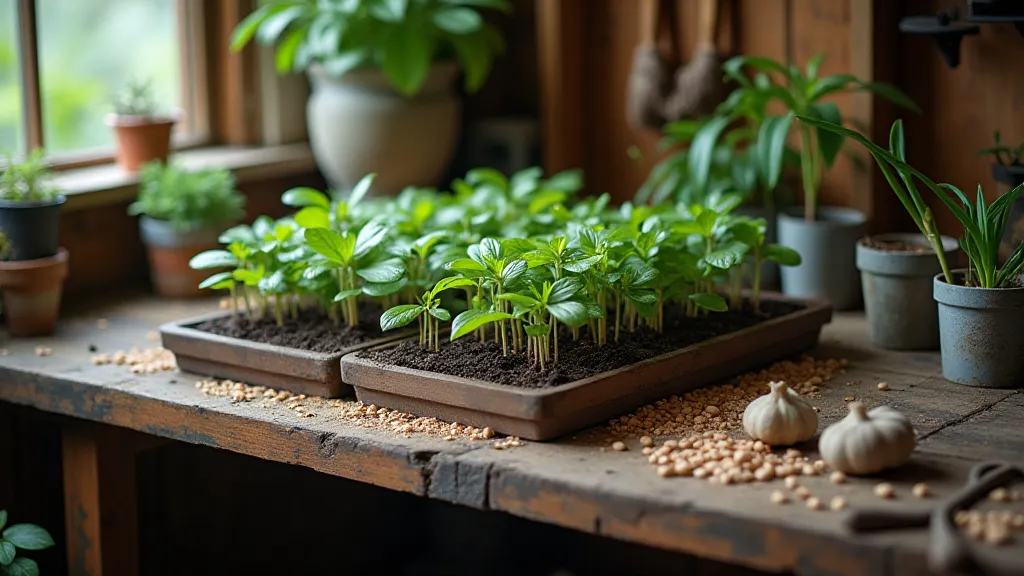
The Accordance of Nature and Cultivation
Saving fruit tree seeds is more than just a horticultural task; it's a philosophical act. It's a recognition that we are part of a larger ecosystem, interconnected with the plants and animals that share our planet. It’s an affirmation of the value of biodiversity and a commitment to preserving the genetic heritage of our food supply. For some, this quest for wild, heirloom varieties takes them foraging for fruits beyond the orchard, a pursuit that involves both knowledge and ethics, as detailed in The Siren’s Bloom: Wild Fruit Foraging & Ethical Harvesting.
Furthermore, responsible cultivation necessitates a deep consideration for water management. Integrated orchard systems are increasingly incorporating innovative approaches to harness and conserve water resources, an approach discussed in The River’s Bounty: Integrating Orchards with Water Management Systems. These approaches acknowledge the preciousness and limited nature of this resource, and the importance of working in harmony with the environment.
Just as the antique accordion’s melodies echo with the voices of the past, the fruit from a seed-saved tree carries the whispers of generations of cultivators. It's a symphony of nature and cultivation, a testament to the enduring power of seed inheritance. Embrace the challenge, cultivate the future, and savor the unique flavors of the past.

